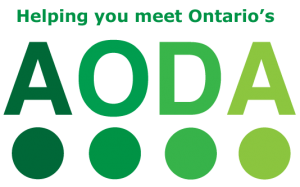Alternate format materials are electronic, audio, Braille, or large print versions of standard print educational materials (e.g. textbooks, novels, student guides, etc.). Electronic versions include, but are not limited to, e-text, scanned text, and web-based text.
Choosing alternative formats
When it comes to selecting and investing alternative formats in the education system, it is important to consider that there is no one format type that will meet the needs of all students. Formats that are accessible to some students with one type of disability are not necessarily accessible to others, even those with the same identified disability. In addition, formats that may be accessible to students at one point in time may not be beneficial later on—an example being if a student’s vision deteriorates to the point where they are no longer able to use large print textbooks provided at school. In-depth and updated knowledge of the student’s learning needs and preferences is essential as the requirements for alternative formats is highly individualized. Another important consideration is the technology available to support alternative formats. Equipment required to produce alternative formats may not be readily available in the school, and teachers or parents may need to seek alternate format providers in order to offer optimal alternative formats for students.
How It Relates to the AODA legislation
What are Alternative Formats relates to the following sections of the Accessibility for Ontarians with Disabilities Act (AODA) Integrated Accessibility Standards, specifically some of the following sections in the Information and Communication Standards:
- Accessible Feedback Process
- Accessible Formats and Communication Supports
- Producers of Educational Training Material
- Training to Educators
In the Ontario public education system, the Alternate Education Resources of Ontario service of the Provincial Schools Branch provides alternate formats like Braille, which helps schools in meeting AODA requirements.
Additional resources to support training to educators can be found on AccessForward’s website under Training Modules and Additional Training Resources, for example Training on Accessible Course Delivery and Instruction.
AODA Significance
- Alternative formats refers to the ways in which information is communicated other than through standard text, including Electronic Text, Audio, Captioning, and Braille. Learning about who uses alternative formats and how these are used, assists educators with using inclusive approaches to teach, communicate, and share information.
- People interact, learn, and communicate in diverse ways. Learning opportunities are increased when flexible ways of engaging with learning materials are provided. Considering how people communicate is important for knowledge to be exchanged. Alternative formats take into account diverse ways of exchanging information.
- The AODA legislates that educational institutions and their employees know how to produce accessible or conversion ready versions of textbooks and printed material. Educators, teachers, and staff are to learn about accessible program or course delivery and instruction and be knowledgeable at interacting and communicating with people with disabilities who may use alternate formats.
Additional Resources
To learn how this section relates to the core principles of the AODA Customer Service regulation, visit the AODA page on SNOW.
To learn of ways to innovate, develop, and design for accessibility, visit OCAD University’s Inclusive Design Research Centre (IDRC) website and the IDRC’s floe project website.
